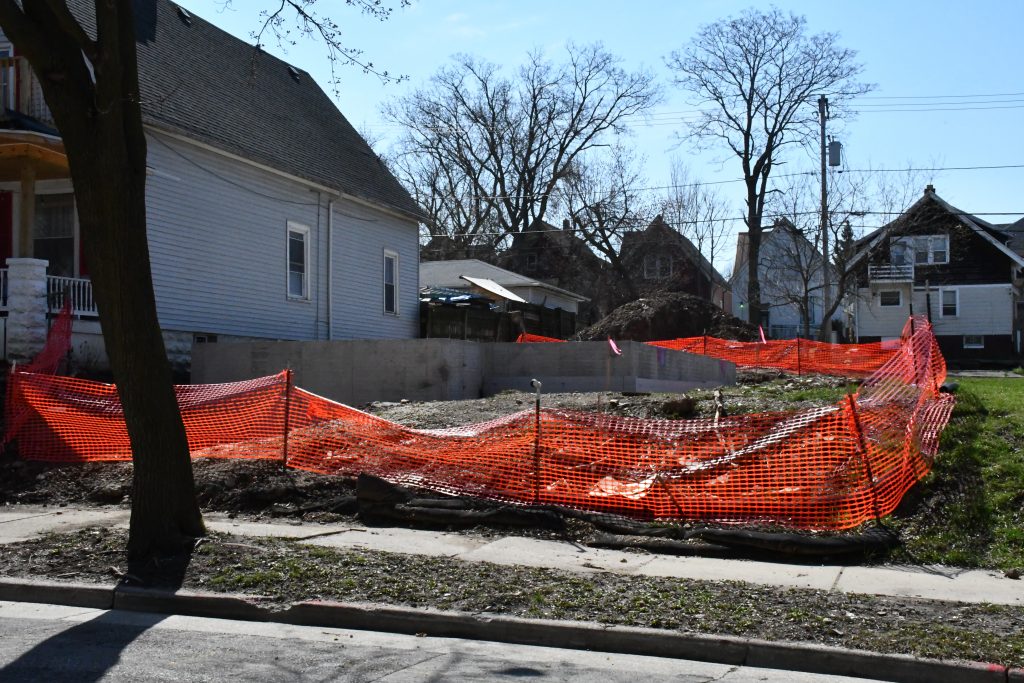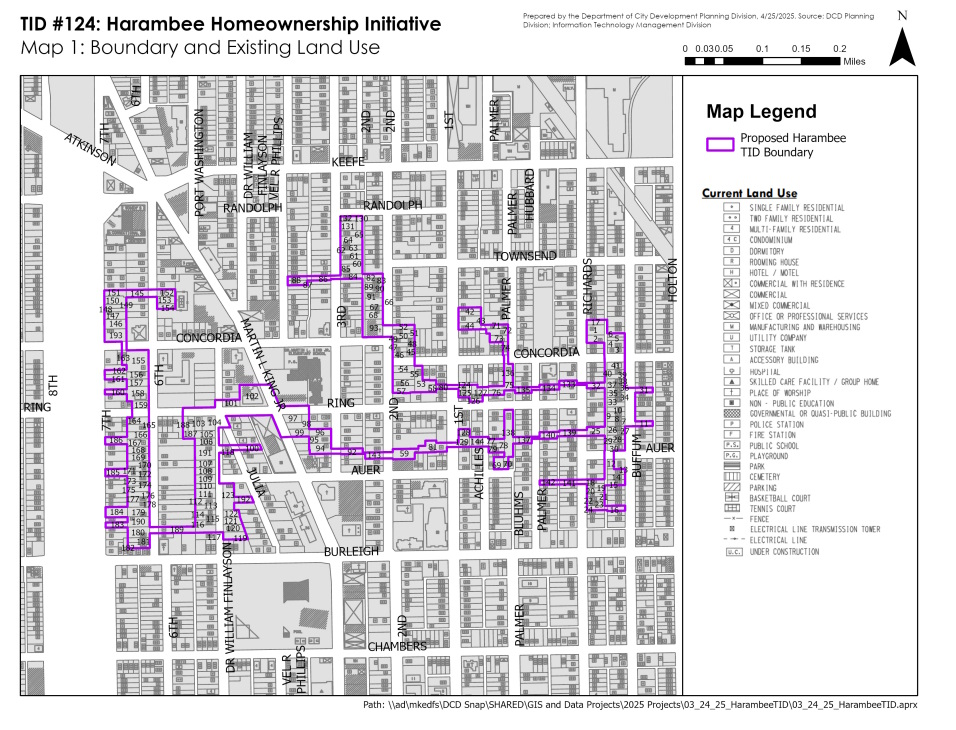City Advancing Financing Plan For 59 Affordable, Owner-Occupied Homes
Complicated Harambee TIF plan guided by Community Development Alliance.

ECE Home at 3353-3355 N. 2nd St. Photo taken April 23, 2025 by Jeramey Jannene. All Rights Reserved.
A new tax incremental financing (TIF) district with a virtually impossible-to-describe shape would be used to create 59 affordable houses for owner-occupants.
The TIF plan, effectively a property tax rebate, would provide $2.85 million plus 2.5% interest over 25 years to two different projects to create new housing at affordable rates. Milwaukee Habitat for Humanity would build 51 homes and Envision Growth would construct eight homes for sale exclusively to early-childhood educators.
The $17.5 million effort, coordinated by the Community Development Alliance, is focused on the Harambee neighborhood north of Downtown.
It’s the second time the city has advanced a “backbone” TIF district. The first backbone district was used to fund 74 homes in an area centered on the Midtown neighborhood.
“This is part of the strategy to get to 100 homes per year,” said CDA Chief Alliance Officer Teig Whaley-Smith to the board of the Redevelopment Authority of the City of Milwaukee (RACM) on Thursday. CDA, formed in 2021 by a coalition of housing partners, has a multi-decade goal to create 32,000 Black and Latino homeowners to close a racial homeownership gap in Milwaukee.
“This year, through this project and others, we anticipate building 80 new construction homes,” said Whaley-Smith.
In the case of the Harambee TIF, the funding would be advanced by the development teams and repaid through incremental property tax revenue. It is intended to close a financing gap between the cost to construct the house, which for Habitat has climbed by almost 60% in recent years, and an affordable sales price that doesn’t make the new owner cost-burdened.
The early-childhood educator (ECE) homes, part of a citywide effort to build 42 homes clustered near childcare centers, are to be sold for approximately $100,000 to qualifying workers. Herb Kohl Philanthropies announced a $1 million gift to the effort last month. Habitat is supporting Envision Growth founder Oby Nwabuzor, who missed the RACM meeting to attend her graduation from the Medical College of Wisconsin, in developing the ECE homes around Malaika Early Learning Center.
All 59 homes covered by the Harambee TIF won’t be built at once. Habitat would be given until 2029 to complete its homes. The ECE homes, which also rely on use-it-or-lose-it American Rescue Plan Act funding, would be completed by the end of 2026.
“Our commitment to Harambee remains deep,” said Milwaukee Habitat CEO Brian Sonderman. “We have built over 100 homes in the Harambee neighborhood now.” It entered the neighborhood to great fanfare in 2021.
Whaley-Smith said the census tracts surrounding the TIF boundaries indicate that 400 housing units have been lost through “abandonment.” The backbone TIF district is intended as a tool to repopulate the neighborhood in a way that provides an opportunity for the residents to build wealth.
But the low initial sales prices and a Habitat restriction on resale prices pose limitations on the use of tax incremental financing, which relies on growth in tax revenue. “They’ve already calculated that into their projections,” said Larry Kilmer, Department of City Development redevelopment and special projects director. The payback period is 25 years, longer than the normal 20 year term the city gives to rental affordable housing efforts. Habitat, to preserve the subsidy for future homeowners, restricts homeowners to only receiving a 2% annual appreciation in a future sales price and maintains a right to repurchase the home. Habitat owners must also receive homebuyer counseling and help build their homes.
On a map, the TIF district is confined by W. Keefe Avenue, W. Burleigh Street, N. Holton Street and Interstate 43. But the boundaries take five pages to describe in a written narrative included in the TIF plan.
“The boundary was developed very purposefully with the goal of capturing as many city-owned vacant parcels as possible,” said Kilmer
But to avoid capturing as much property unrelated to the project as possible, the district effectively weaves through the neighborhood as a chain of lots. State law requires TIF districts to be contiguous, preventing the city from simply creating a scattered site district of vacant lots. Inclusion in the district does not directly impact a property owner, but the city must satisfy a “but for” test in crafting the TIF plan and risks unintended future consequences to tax revenue and TIF flexibility if it includes too many properties in the district.
The RACM board unanimously approved the project. The Common Council must still approve the plan.
Legislation Link - Urban Milwaukee members see direct links to legislation mentioned in this article. Join today
If you think stories like this are important, become a member of Urban Milwaukee and help support real, independent journalism. Plus you get some cool added benefits.






















